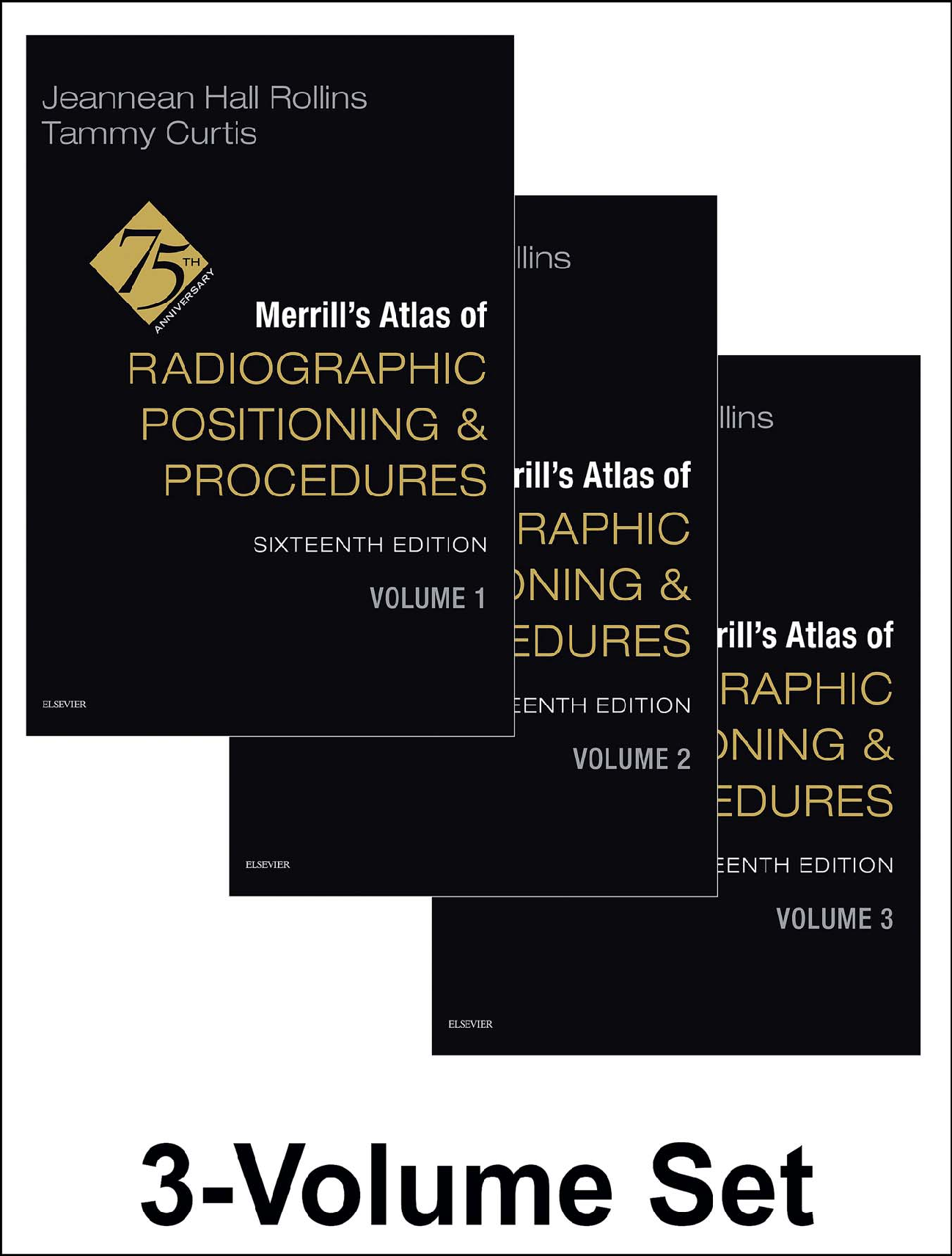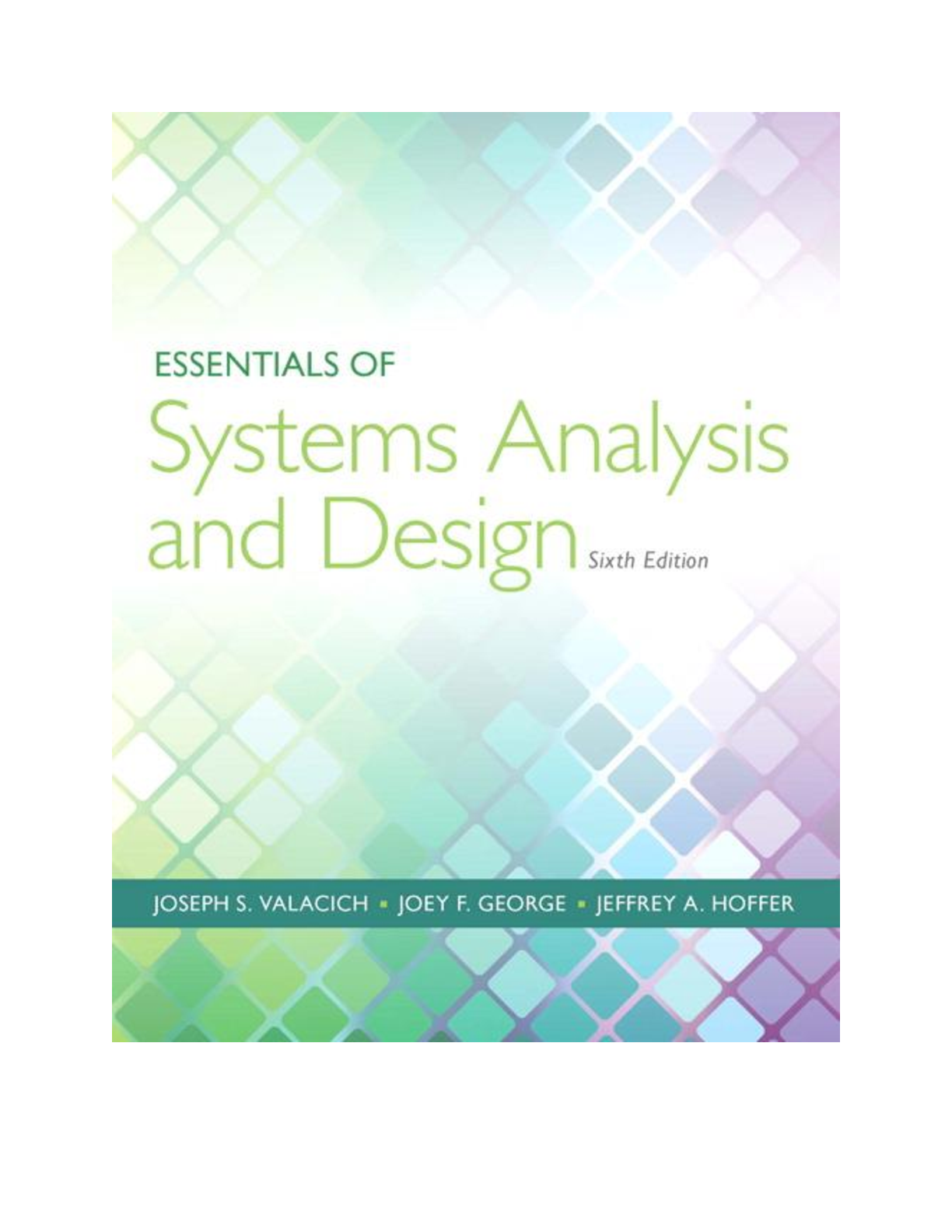Mathematics > eBook-PDF > Linear Algebra and Its Applications, 6th Edition By David Lay, Steven Lay, Judi McDonald [PDF} [eBoo (All)
Linear Algebra and Its Applications, 6th Edition By David Lay, Steven Lay, Judi McDonald [PDF} [eBook]
Document Content and Description Below
MyLab Math Support You Need, When You Need It Applications Index Biology and Ecology Business and Economics Computers and Computer Science Control Theory Electrical Engineering Engineering Mat... hematics Numerical Linear Algebra Physical Sciences Statistics Linear Algebra and Its Applications Contents Preface What’s New in This Edition Distinctive Features Pedagogical Features Get the most out of MyLab Math Resources for Success A Note to Students 1 Linear Equations in Linear Algebra 1.1 Systems of Linear Equations Matrix Notation Solving a Linear System Existence and Uniqueness Questions Practice Problems 1.1 Exercises Solutions to Practice Problems 1.2 Row Reduction and Echelon Forms Pivot Positions The Row Reduction Algorithm Solutions of Linear Systems Parametric Descriptions of Solution Sets Back-Substitution Existence and Uniqueness Questions Practice Problems 1.2 Exercises Solutions to Practice Problems 1.3 Vector Equations Vectors in R2 Geometric Descriptions of R2 Vectors in R3 Vectors in Rn Linear Combinations A Geometric Description of Span {v} and Span {u, v} Linear Combinations in Applications Practice Problems 1.3 Exercises Solutions to Practice Problems 1.4 The Matrix Equation Ax=b Existence of Solutions Computation of Ax Properties of the Matrix–Vector Product Ax Practice Problems 1.4 Exercises Solutions to Practice Problems 1.5 Solution Sets of Linear Systems Homogeneous Linear Systems Parametric Vector Form Solutions of Nonhomogeneous Systems Practice Problems 1.5 Exercises Solutions to Practice Problems 1.6 Applications of Linear Systems A Homogeneous System in Economics Balancing Chemical Equations Network Flow Practice Problems 1.6 Exercises Solutions to Practice Problems 1.7 Linear Independence Linear Independence of Matrix Columns Sets of One or Two Vectors Sets of Two or More Vectors Practice Problems 1.7 Exercises Solutions to Practice Problems 1.8 Introduction to Linear Transformations Matrix Transformations Linear Transformations Practice Problems 1.8 Exercises Solutions to Practice Problems 1.9 The Matrix of a Linear Transformation Geometric Linear Transformations of R2 Existence and Uniqueness Questions Practice Problems 1.9 Exercises Solution to Practice Problems 1.10 Linear Models in Business, Science, and Engineering Constructing a Nutritious Weight-Loss Diet Linear Equations and Electrical Networks Difference Equations Practice Problems 1.10 Exercises Solution to Practice Problem Chapter 1 Projects Chapter 1 Supplementary Exercises Chapter 2 Matrix Algebra 2.1 Matrix Operations Sums and Scalar Multiples Matrix Multiplication Properties of Matrix Multiplication Powers of a Matrix The Transpose of a Matrix Practice Problems 2.1 Exercises Solution to Practice Problems 2.2 The Inverse of a Matrix Elementary Matrices An Algorithm for Finding A−1 Another View of Matrix Inversion Practice Problems 2.2 Exercises Solution to Practice Problems 2.3 Characterizations of Invertible Matrices Invertible Linear Transformations Practice Problems 2.3 Exercises Solution to Practice Problems 2.4 Partitioned Matrices Addition and Scalar Multiplication Multiplication of Partitioned Matrices Inverses of Partitioned Matrices Practice Problems 2.4 Exercises Solution to Practice Problems 2.5 Matrix Factorizations The LU Factorization An LU Factorization Algorithm A Matrix Factorization in Electrical Engineering Practice Problems 2.5 Exercises Solution to Practice Problem 2.6 The Leontief Input–Output Model A Formula for (I – C)−1 The Economic Importance of Entries in (I – C)−1 Practice Problem 2.6 Exercises Solution to Practice Problem 2.7 Applications to Computer Graphics Homogeneous Coordinates Composite Transformations 3D Computer Graphics Homogeneous 3D Coordinates Perspective Projections Further Reading Practice Problem 2.7 Exercises Solution to Practice Problem 2.8 Subspaces of Rn Column Space and Null Space of a Matrix Basis for a Subspace Practice Problems 2.8 Exercises Solution to Practice Problems 2.9 Dimension and Rank Coordinate Systems The Dimension of a Subspace Rank and the Invertible Matrix Theorem Practice Problems 2.9 Exercises Solution to Practice Problems Chapter 2 Projects Chapter Supplementary Exercises 3 Determinants 3.1 Introduction to Determinants Practice Problems 3.1 Exercises Solutions to Practice Problems 3.2 Properties of Determinants Column Operations Determinants and Matrix Products A Linearity Property of the Determinant Function Proofs of Theorems 3 and 6 Practice Problems 3.2 Exercises Solutions to Practice Problems 3.3 Cramer’s Rule, Volume, and Linear Transformations Cramer’s Rule Application to Engineering A Formula for A−1 Determinants as Area or Volume Linear Transformations Practice Problem 3.3 Exercises Solution to Practice Problem Chapter 3 Projects Chapter 3 Supplementary Exercises 4 Vector Spaces 4.1 Vector Spaces and Subspaces Subspaces A Subspace Spanned by a Set Practice Problems 4.1 Exercises Solutions to Practice Problems 4.2 Null Spaces, Column Spaces, Row Spaces, and Linear Transformations The Null Space of a Matrix An Explicit Description of Nul A The Column Space of a Matrix The Row Space The Contrast Between Nul A and Col A Kernel and Range of a Linear Transformation Practice Problems 4.2 Exercises Solutions to Practice Problems 4.3 Linearly Independent Sets; Bases The Spanning Set Theorem Bases for Nul A, Col A, and Row A Two Views of a Basis Practice Problems 4.3 Exercises Solutions to Practice Problems 4.4 Coordinate Systems A Graphical Interpretation of Coordinates Coordinates in Rn The Coordinate Mapping Practice Problems 4.4 Exercises Solutions to Practice Problems 4.5 The Dimension of a Vector Space Subspaces of a Finite-Dimensional Space The Dimensions of Nul A, Col A, and Row A Applications to Systems of Equations Rank and the Invertible Matrix Theorem Practice Problems 4.5 Exercises Solutions to Practice Problems 4.6 Change of Basis Change of Basis in Rn Practice Problems 4.6 Exercises Solutions to Practice Problems 4.7 Digital Signal Processing Introduction Discrete-Time Signals Linear Time Invariant Transformations Digital Signal Processing Generating Bases for Subspaces of S Practice Problems 4.7 Exercises Solutions to Practice Problems 4.8 Applications to Difference Equations Linear Independence in the Space S of Signals Linear Difference Equations Solution Sets of Linear Difference Equations Nonhomogeneous Equations Reduction to Systems of First-Order Equations Practice Problems 4.8 Exercises Solution to Practice Problem Chapter 4 Projects Chapter 4 Supplementary Exercises 5 Eigenvalues and Eigenvectors 5.1 Eigenvectors and Eigenvalues Eigenvectors and Difference Equations Practice Problems 5.1 Exercises Solutions to Practice Problems 5.2 The Characteristic Equation Determinants The Characteristic Equation Similarity Application to Dynamical Systems Practice Problems 5.2 Exercises Solution to Practice Problem 5.3 Diagonalization Diagonalizing Matrices Matrices Whose Eigenvalues Are Not Distinct Practice Problems 5.3 Exercises Solutions to Practice Problems 5.4 Eigenvectors and Linear Transformations Eigenvectors of Linear Transformations The Matrix of a Linear Transformation Linear Transformations on Rn Similarity of Matrix Representations Practice Problems 5.4 Exercises Solutions to Practice Problems 5.5 Complex Eigenvalues Real and Imaginary Parts of Vectors Eigenvalues and Eigenvectors of a Real Matrix That Acts on Cn Practice Problems 5.5 Exercises Solution to Practice Problem 5.6 Discrete Dynamical Systems A Predator–Prey System Graphical Description of Solutions Change of Variable Complex Eigenvalues Survival of the Spotted Owls Practice Problems 5.6 Exercises Solutions to Practice Problems 5.7 Applications to Differential Equations Decoupling a Dynamical System Complex Eigenvalues Practice Problems 5.7 Exercises Solutions to Practice Problems 5.8 Iterative Estimates for Eigenvalues The Power Method The Inverse Power Method Practice Problems 5.8 Exercises Solution to Practice Problem 5.9 Applications to Markov Chains Predicting the Distant Future Steady-State Vectors Practice Problems 5.9 Exercises Solutions to Practice Problems Chapter 5 Projects Chapter 5 Supplementary Exercises 6 Orthogonality and Least Squares 6.1 Inner Product, Length, and Orthogonality The Inner Product The Length of a Vector Distance in Rn Orthogonal Vectors Orthogonal Complements Angles in R2 and R3 (Optional) Practice Problems 6.1 Exercises Solutions to Practice Problems 6.2 Orthogonal Sets An Orthogonal Projection A Geometric Interpretation of Theorem 5 Decomposing a Force into Component Forces Orthonormal Sets Practice Problems 6.2 Exercises Solutions to Practice Problems 6.3 Orthogonal Projections A Geometric Interpretation of the Orthogonal Projection Properties of Orthogonal Projections Practice Problems 6.3 Exercises Solution to Practice Problems 6.4 The Gram–Schmidt Process Orthonormal Bases QR Factorization of Matrices Practice Problems 6.4 Exercises Solution to Practice Problems 6.5 Least-Squares Problems Solution of the General Least-Squares Problem Alternative Calculations of Least-Squares Solutions Practice Problems 6.5 Exercises Solutions to Practice Problems 6.6 Machine Learning and Linear Models Machine Learning Least-Squares Lines The General Linear Model Least-Squares Fitting of Other Curves Multiple Regression Practice Problem 6.6 Exercises Solution to Practice Problem 6.7 Inner Product Spaces Lengths, Distances, and Orthogonality The Gram–Schmidt Process Best Approximation in Inner Product Spaces Two Inequalities An Inner Product for C[a, b] (Calculus required) Practice Problems 6.7 Exercises Solutions to Practice Problems 6.8 Applications of Inner Product Spaces Weighted Least-Squares Trend Analysis of Data Fourier Series (Calculus required) Practice Problems 6.8 Exercises Solutions to Practice Problems Chapter 6 Projects Chapter 6 Supplementary Exercises 7 Symmetric Matrices and Quadratic Forms 7.1 Diagonalization of Symmetric Matrices The Spectral Theorem Spectral Decomposition Practice Problems 7.1 Exercises Solutions to Practice Problems 7.2 Quadratic Forms Change of Variable in a Quadratic Form A Geometric View of Principal Axes Classifying Quadratic Forms Practice Problem 7.2 Exercises Solution to Practice Problem 7.3 Constrained Optimization Practice Problems 7.3 Exercises Solutions to Practice Problems 7.4 The Singular Value Decomposition The Singular Values of an m × n Matrix The Singular Value Decomposition Applications of the Singular Value Decomposition Practice Problems 7.4 Exercises Solutions to Practice Problems 7.5 Applications to Image Processing and Statistics Mean and Covariance Principal Component Analysis Reducing the Dimension of Multivariate Data Characterizations of Principal Component Variables Practice Problems 7.5 Exercises Solutions to Practice Problems Chapter 7 Projects Chapter 7 Supplementary Exercises Chapter 8 The Geometry of Vector Spaces 8.1 Affine Combinations Practice Problems 8.1 Exercises Solution to Practice Problem 8.2 Affine Independence Barycentric Coordinates Barycentric Coordinates in Computer Graphics Practice Problems 8.2 Exercises Solutions to Practice Problems 8.3 Convex Combinations Practice Problems 8.3 Exercises Solutions to Practice Problems 8.4 Hyperplanes Practice Problems 8.4 Exercises Solution to Practice Problem 8.5 Polytopes Simplex Hypercube Practice Problems 8.5 Exercises Solution to Practice Problem 8.6 Curves and Surfaces Bézier Curves Connecting Two Bézier Curves Matrix Equations for Bézier Curves Bézier Surfaces Approximations to Curves and Surfaces Recursive Subdivision of Bézier Curves and Surfaces Practice Problems 8.6 Exercises Solutions to Practice Problems Chapter 8 Project Chapter 8 Supplementary Exercises 9 Optimization 9.1 Matrix Games 2×n Matrix Games Reducing the Size of a Game Practice Problems 9.1 Exercises Solution to Practice Problem 9.2 Linear Programming–Geometric Method Practice Problems 9.2 Exercises Solutions to Practice Problems 9.3 Linear Programming–Simplex Method Minimization Problems The “Simplex” in the Simplex Algorithm Practice Problem 9.3 Exercises Solution to Practice Problem 9.4 Duality Linear Programming and Matrix Games Practice Problems 9.4 Exercises Solutions to Practice Problems Chapter 9 Projects Chapter 9 Supplementary Exercises Appendixes Appendix A Uniqueness of the Reduced Echelon Form Appendix B Complex Numbers Geometric Interpretation Powers of a Complex Number Complex Numbers and R2 Credits Cover Chapter 1 Chapter 2 Chapter 3 Chapter 4 Chapter 5 Chapter 6 Chapter 7 Chapter 8 Chapter 9 Chapter 10 (online) Glossary Answers to Odd-Numbered Exercises Chapter 1 Section 1.1, page 10 Section 1.2, page 23 Section 1.3, page 34 Section 1.4, page 42 Section 1.5, page 51 Section 1.6, page 58 Section 1.7, page 65 Section 1.8, page 73 Section 1.9, page 82 Section 1.10, page 91 Chapter 1 Supplementary Exercises, page 93 Chapter 2 Section 2.1, page 108 Section 2.2, page 118 Section 2.3, page 124 Section 2.4, page 130 Section 2.5, page 138 Section 2.6, page 145 Section 2.7, page 153 Section 2.8, page 160 Section 2.9, page 166 Chapter 2 Supplementary Exercises, page 169 Chapter 3 Section 3.1, page 177 Section 3.2, page 185 Section 3.3, page 195 Chapter 3 Supplementary Exercises, page 197 Chapter 4 Section 4.1, page 208 Section 4.2, page 219 Section 4.3, page 228 Section 4.4, page 238 Section 4.5, page 247 Section 4.6, page 253 Section 4.7, Page 260 Section 4.8, page 268 Chapter 4 Supplementary Exercises, page 271 Chapter 5 Section 5.1, page 280 Section 5.2, page 288 Section 5.3, page 295 Section 5.4, page 303 Section 5.5, page 310 Section 5.6, page 320 Section 5.7, page 328 Section 5.8, page 335 Section 5.9, page 344 Chapter 5 Supplementary Exercises, page 346 Chapter 6 Section 6.1, page 356 Section 6.2, page 364 Section 6.3, page 374 Section 6.4, page 380 Section 6.5, page 388 Section 6.6, page 397 Section 6.7, page 406 Section 6.8, page 412 Chapter 6 Supplementary Exercises, page 414 Chapter 7 Section 7.1, page 423 Section 7.2, page 430 Section 7.3, page 438 Section 7.4, page 448 Section 7.5, page 455 Chapter 7 Supplementary Exercises, page 457 Chapter 8 Section 8.1, page 467 Section 8.2, page 477 Section 8.3, page 484 Section 8.4, page 493 Section 8.5, page 505 Section 8.6, page 516 Chapter 8 Supplementary Exercises, pages 519 Chapter 9 Section 9.1, page 533 Section 9.2, page 543 Section 9.3, page 559 Section 9.4, page 568 Chapter 9 Supplementary Exercises, page 570 Chapter 10 Finite-State Markov Chains 10.1 Introduction and Examples Signal Transmission Diffusion Random Walks on {1, … , n} Random Walks on Graphs Practice Problems 10.1 Exercises Solution to Practice Problems 10.2 The Steady-State Vector and Google’s PageRank Steady-State Vectors Interpreting the Steady-State Vector Regular Matrices PageRank and the Google Matrix Practice Problem 10.2 Exercises Solution to Practice Problem 10.3 Communication Classes Communicating States Mean Return Times Practice Problem 10.3 Exercises Solution to Practice Problem 10.4 Classification of States and Periodicity Recurrent and Transient States Periodicity Practice Problem 10.4 Exercises Solution to Practice Problem 10.5 The Fundamental Matrix The Fundamental Matrix and Transient States Transit Times Absorption Probabilities Practice Problems 10.5 Exercises Solution to Practice Problems 10.6 Markov Chains and Baseball Statistics Baseball Modeled by a Markov Chain Constructing the Transition Matrix Applying the Model Practice Problems 10.6 Exercises Solution to Practice Problems Appendix 1 Proof of Theorem 1 Appendix 2 Probability Probability Random Variables and Expectation Markov Chains Proofs of Theorems Mean Return Times Periodicity as a Class Property The Fundamental Matrix Absorption Probabilities Chapter 10: Answers to Exercises Chapter 10 Section 10.1, page C-9 Section 10.2, page C-21 Section 10.3, page C-31 Section 10.4, page C-40 Section 10.5, page C-50 Section 10.6, page C-61 [Show More]
Last updated: 2 years ago
Preview 1 out of 600 pages

Buy this document to get the full access instantly
Instant Download Access after purchase
Buy NowInstant download
We Accept:

Reviews( 0 )
$25.00
Can't find what you want? Try our AI powered Search
Document information
Connected school, study & course
About the document
Uploaded On
Dec 22, 2022
Number of pages
600
Written in
Additional information
This document has been written for:
Uploaded
Dec 22, 2022
Downloads
0
Views
303


























